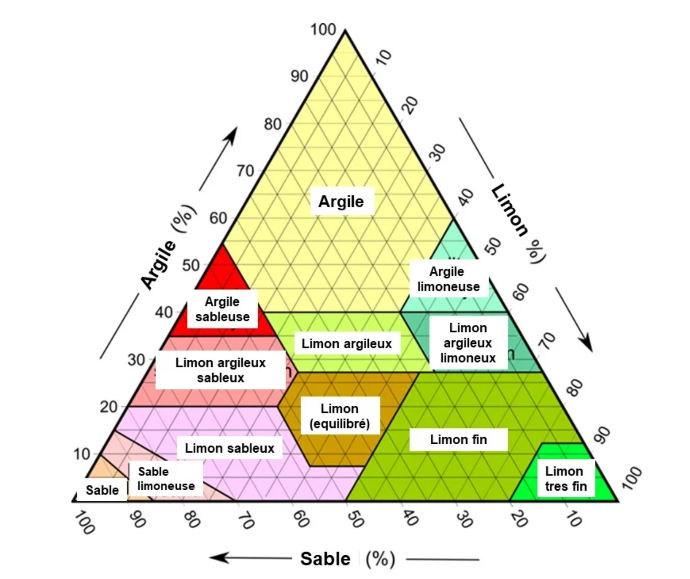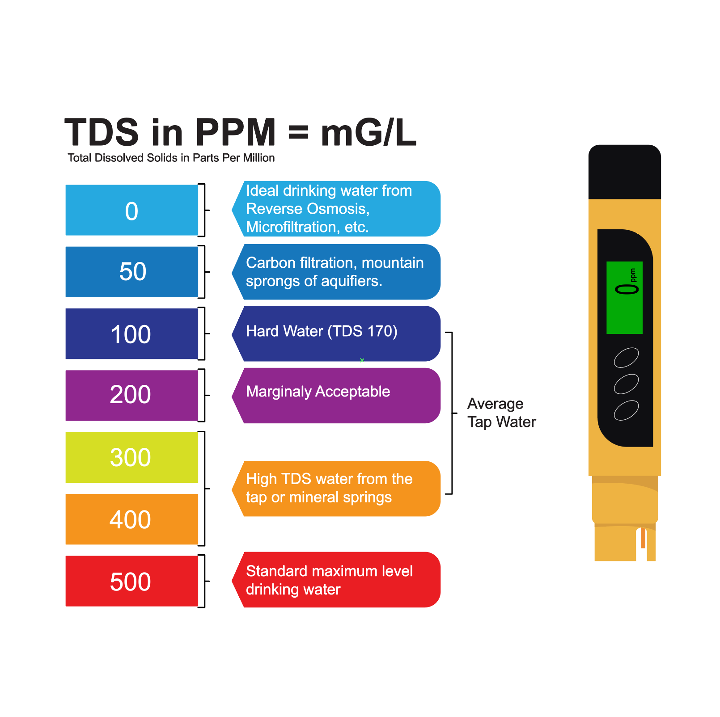Through the jobs created, the money invested, and the products exported, the mining sector has established itself as a cornerstone for the proper functioning of our society. Intimately linked to this sector, the use of water is also an important basis on which we can base our societal future. The meeting of these two economic pillars deserves the attention of experts in order to optimize the processes and reduce unnecessary expenses.
Several factors can influence the different water treatments use in the mining industry. Whether we're talking about the types of soil, the water source used, or changes in temperature, these changes all have an impact on how well a water purification system works. Significant variations in total dissolved solids, permeate flow rate or the efficiency and the amount needed of certain chemical processes can be observed when a system is poorly suited to its situation.
This article aims to help you better understand the different aspects that can affect the proper functioning of a water treatment system in the mining sector. To do so, we will present some of the problems that can be caused by a system that is inadequate to your situation and the advantages of professionally adapted systems.
The influences of water
Soil Types
The Canadian soil classification system segments these into 10 classes, 31 major groups and 220 subgroups, which are then separated into families and series. In total, there are over a thousand categories designed to map the different compositions of Canadian soils.

Water intakes
The main sources of water used in the mining sector are rivers, lakes, groundwater and tailings. These sources each have their own characteristics. In other words, the environment surrounding the water affects the contaminants, turbidity, color, and many other aspects found in it.
Lakes and rivers are naturally prone to the propagation of certain parameters because the water flows and carries contaminants such as heavy metals, organic pollutants, pathogens and nutrients responsible for eutrophication of the water. While surface water can have a very high rate of turbidity, groundwater has a clean appearance because it has been naturally filtered by different types of soil. However, its appearance can be deceptive since it is not uncommon to find dissolved contaminants such as iron, manganese, or coliform bacteria.
Whether the needs are related to the availability of drinking water on the site, to the distribution of make-up water or to the reuse of water, it is important to consider all the hydrological and hydrogeological characteristics of the water intake. To learn more about the different contaminants that can be found in water, you can refer to this article: health Canada.
Temperature Variations
In Canada, the temperature range of surface water is between 2 ° C and 25 ° C, which represents a significant difference, especially since these variations can occur in the same water source, due to the drastic temperature variations from one season to another.
Impact of various parameter on water treatment system
Total Dissolved Solids (TDS)
Total Dissolved Solids (TDS) can come from many places, such as different types of soil or water source used. Improper treatment of this parameter can have a negative impact on your system or on the final processing result.

On the other hand, a low TDS is a precursor to a high pH, which can present two complications. Firstly, the water could develop a bitter taste, which is not a priority criteria when looking for a water treatment system to supply process water. On the other hand, pH variations in the water, combined with low alkalinity, can make it corrosive and accelerate the degradation of certain metals.
Alteration of permeate flow
The permeate flow rate represents the amount of liquid that has been treated by a Reverse Osmosis system. Several aspects such as pressure, type of membrane and filtration surface can influence the amount of water treated.
In addition to these controllable parameters, the temperature of the water affects proportionally the permeate flow rate. Indeed, the higher the temperature, the higher the flow rate and the lower the quality of the permeate in the same proportions. Therefore, temperature changes can have an impact on the quality of the water leaving the plant at the end of the process.
Incompatibility of certain treatments
Changes in water temperature have various consequences on different treatment processes. Positive or negative, these changes can be problematic if they have not been calculated at glance.Chemical treatments are strongly influenced by changing temperatures since most chemical reactions arise from the activation energy associated with them. In other words, a drop in temperature means a decrease in the number of chemical reactions, and the result is a reduction in the throughput of treatment.
When thinking of treatment by coagulation or flocculation, changes in temperature affect process efficiency as changes in temperature are known to alter the kinetics of chemical reactions. Explained thanks to the Arrhenius Equation, a decrease in temperature causes a reduction in the rate constant (K), since the solubility of coagulants is lower, and the viscosity of water slows down the settling of the flocs.
An adapted system pays off
Cost optimization
Systems optimized for needs, geographic, topographical, environmental and any other variables that can affect the efficiency of a water treatment system generally offer a better return on investment for several reasons. In fact, it happens that a well-adapted system allows you to recover precious metals which normally "would sleep" in your wastewater.
Plus, you can forget about the wacky steps that increase the energy and maintenance costs of operations. With a system built for your situation, only the useful are included. In addition, well-matched systems ensure optimum performance for the desired treatment while delivering an energy cost that reflects your actual needs.
No operational constraints
Forget about operational constraints that can be problematic in the long and short term. Whether it's tight spaces, removal of a particular contaminant, or changing government standards, custom systems offer peace of mind for all your constraints that, with a generic system, could cause complications in the future.
Constant operating flow
The consistency
of operation offered by a custom designed system allows for a much more stable
flow of operation. Longer intervals between required maintenance not only
reduce operating costs, they also ensure that downtime are minimal.
Plus, the
various variables that can affect the efficiency of the water treatment have
already been taken into account by the consultants chosen to create such a
system, which helps to reduce fluctuations in system performance.
For each situation, its solution!
With different soil types from place to place, unique water sources in their compositions, changing temperatures and technologies that can be affected by all of these characteristics, the importance of taking into account every parameter possible is all the more important. Therefore, sometimes, it is advantageous to call on the experts through consulting services such as the PUR3 support offered by Durpro.
Are you facing water treatment problems, would you like to optimize your operations or does making a return on your investments seem attractive to you? Don't wait any longer and contact a team of experts ready to help you.
Sources
- Anthony Toby O’Geen. (2013). Soil Water Dynamics. Accessed from https://www.nature.com/scitable/knowledge/library/soil-water-dynamics-103089121/
- Carrión, F., Sanchez-Vizcaino, J., Corcoles, J.I. et al. (2016). Optimization of groundwater abstraction system and distribution pipe in pressurized irrigation systems for minimum cost. Irrig Sci34, 145–159. https://doi.org/10.1007/s00271-016-0489-5
- B. Walker, D.J. Baumgartner, C.P. Gerba, K. Fitzsimmons, (2019). Chapter 16 - Surface Water Pollution.Editor(s): Mark L. Brusseau, Ian L. Pepper, Charles P. Gerba,Environmental and Pollution Science (Third Edition), Academic Press.
- International Association of Hydrogeologists. (2018). MINING ENTERPRISES & GROUNDWATER. Accessed from https://iah.org/wp-content/uploads/2018/12/IAH_SOS_MiningEnterprisesGroundwater.pdf
- KnowyourH2O (2020). Get Informed |Total dissolved solids. Accessed from https://www.knowyourh2o.com/indoor-6/total-dissolved-solids
- McKeague, J. Alex et H.b. Stonehouse. (2015). Classification des sols. L’Encyclopédie Canadienne, Accessed from https://www.thecanadianencyclopedia.ca/fr/article/classification-des-sols
- Pall Corporation. (2012). Mine Water Treatment solutions for Discharge and Re-use. Accessed from file:///Users/raphaelbouchard-tremblay/Downloads/Mine-Water-Treatment.pdf
- Safe Drinking Water Foundation. (2020) Water Temperature Fact Sheet. Accessed from https://www.safewater.org/fact-sheets-1/2018/8/15/water-temperature-fact-sheet
- Santé Canada. (2017). Recommandations pour la qualité de l’eau potable au Canada – Tableau sommaire. Accessed from https://www.canada.ca/fr/sante-canada/services/sante-environnement-milieu-travail/rapports-publications/qualite-eau/recommandations-qualite-eau-potable-canada-tableau-sommaire.html
- Space-O. (2018). Water Treatment Plant Optimization (WTPO). Accessed from http://www.space-o.eu/wp-content/uploads/2018/03/Session-5-WTPO.pdf
- S Geological Survey. (1982). Contamination of Groundwater. Accessed from https://www.usgs.gov/special-topic/water-science-school/science/contamination-groundwater?qt-science_center_objects=0#qt-science_center_objects
- Water quality association. (2018). R EVERSE OSMOSIS (RO) FACT SHEET. Accessed from https://www.wqa.org/Portals/0/Technical/Technical%20Fact%20Sheets/2019_RO.pdf